LOTUS SUGGESTED SYSTEMS #3
Kulaklık Modelleri ve fiyatları, en iyi kablosuz kulaklık, en iyi kulaklık
hificinema.co.uk
lotushifi.co.uk
oxfordaudio.co.uk
27/02/2024 08:30
Kulaklık Modelleri ve fiyatları, en iyi kablosuz kulaklık, en iyi kulaklık
JUNIOR VITUS £42,575
As I embarked on assembling, photographing and writing about this setup, I felt as excited as I was with my first two 2024 suggested systems, both of which were far more lofty and prestigious. Why was this so ? Simply because money does not have to be primary driver behind musical enjoyment and this neat little one box solution we have here is an absolute winner and just a real fun way of enjoying music.
This hobby has always been about special combinations and there’s most definitely a real magic going on here, which we will explain and get into in due course. It is also a style and level of system that year in year out garners a lot of sales and interest here at Lotus. Many people are shopping at this sort of price level and want this type of sound from a setup that is this simple and small. That is especially true of people migrating over from the Linn and Naim world – of which there is always a steady stream – and the performance of a setup like this is always a bit of a surprise to these customers, even compared back against their elaborate 6,7 or 8 box setup at home. You still can’t call this system cheap however and that is in part because it has been very carefully finished off with low noise ancillaries throughout. But, it is an awful lot cheaper than many of the systems that customers will leave behind when investigating it.

10 YEARS OF LOTUS AND VITUS
We have been Vitus specialists for over 10 years now. Without wishing to flex too forcibly, I would point out that we were very influential in actually growing the brand in this country and establishing the strong foundation and user base that it now enjoys today. When we began in 2013 there were 1 or 2 other appointed dealers but to be fair, neither were generating much if any sales. We worked hard though, staunchly believed in the products and over the next 5 years moved over 100 customers into it, many of who were high level Naim owners looking for a new world of performance.
It follows then that we understand the brand profoundly. We have watched it evolve and expended much effort and time discovering its secrets, it’s trump cards and also its peccadilloes. For example, many customers moving into it over the years have wanted to simply buy the boxes and keep their existing speakers – Kudos, PMC, Focal etc. – and retain their existing ancillaries – superlumina, chord, audioquest etc. – and although those people always got themselves a better system, it would always be a fraction of its potential had they moved over to true high end partnering equipment which elevates Vitus to entirely different level. So we have always extoled the importance of the complete Vitus system recipe; it is a brand which has enormous strengths but should be built expertly if one is to get the absolute best from it.
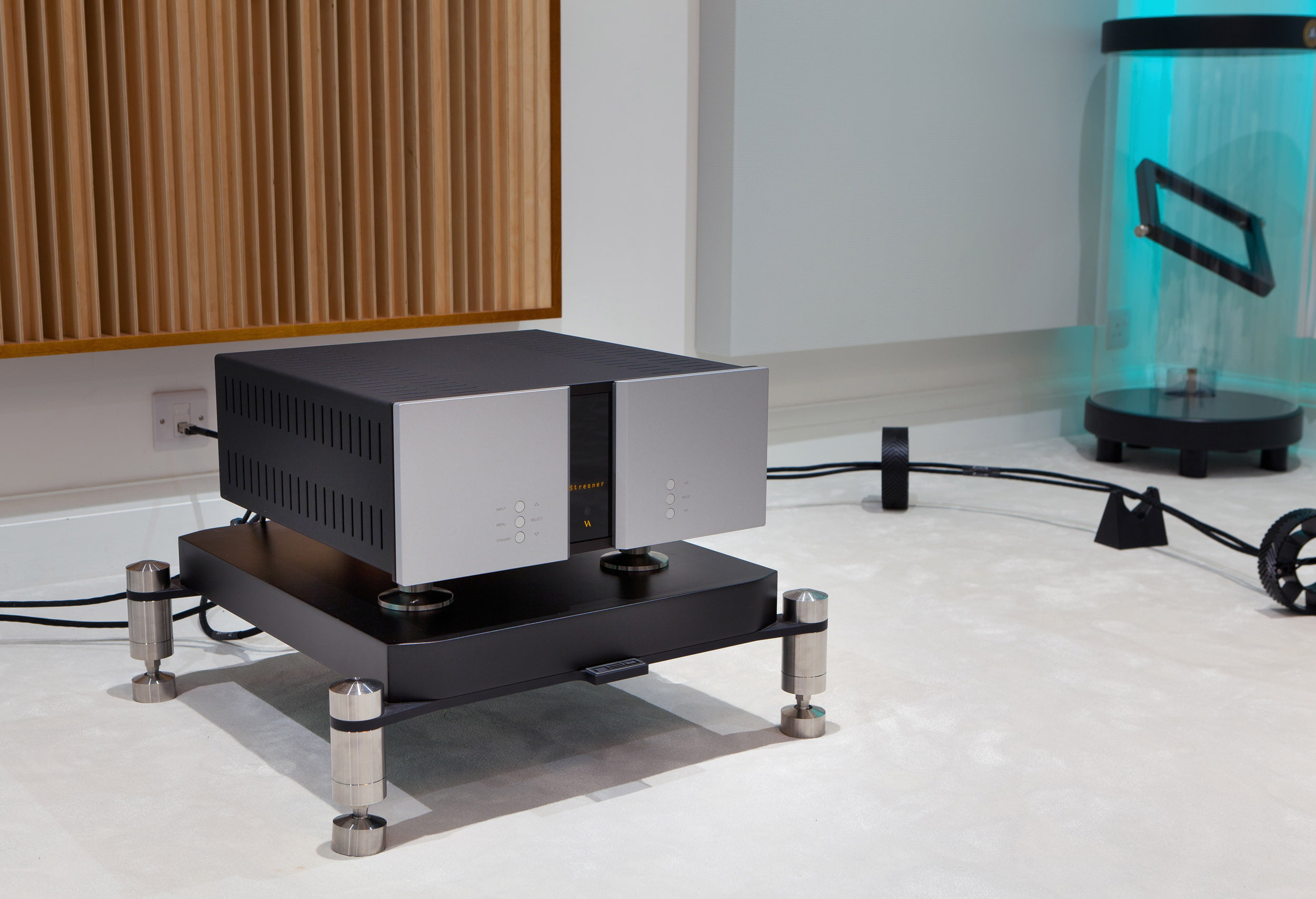
Last year, our special Vitus recipes took a big quantum leap with our exclusive acquisition of Hemingway cables from Korea. There is a whole dedicated article on this if you are interested to learn more but suffice to say, Hemingway not only improves but arguably favourably transforms the Vitus sound. In the first 6 months our success with Hemingway to Vitus customers has been remarkable and one quick listen is enough to understand why. There is a lot more to say on this but suffice to say that Hemingway has reinvigorated Vitus as a brand here and augmented its out and out power and desirability in the demo room, and it has also led to a whole new wave of pre-existing Vitus owners coming to Lotus to take advantage of what these cables do.
The other important piece of alchemy this system is the little Thrax Sirens speakers. Like Hemingway they also represent a somewhat serendipitous pairing with Vitus, at least as or even better matching than any other speaker we sell yet they also happen to be the most affordable we offer. Let’s break everything down in turn though, and return to the Sirens in due course.
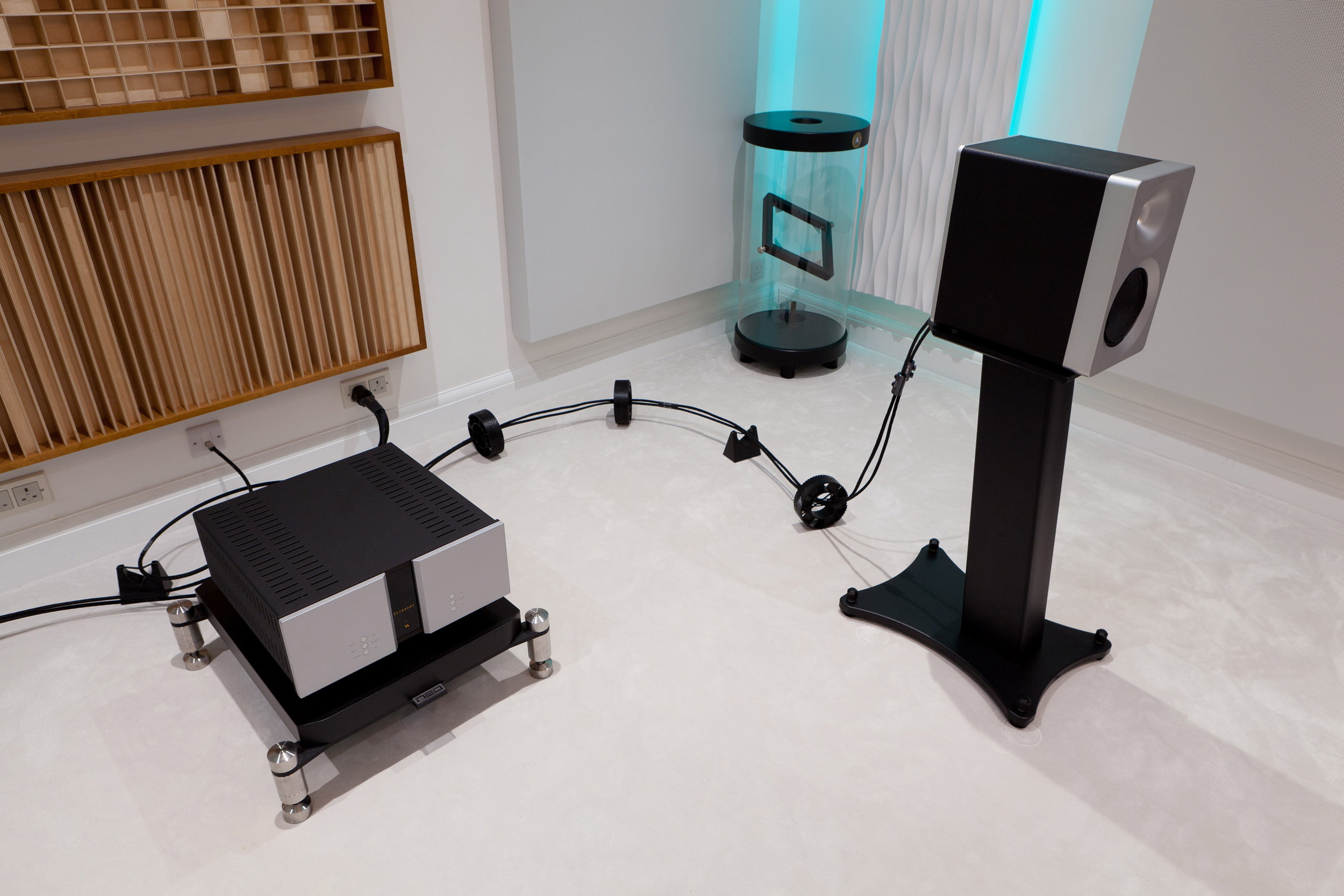
THE VITUS RI-101 MK2 INTEGRATED
The Vitus RI-101. The everyman. The linch pin. A system’s beating heart which can walk with Kings nor lose the common touch. That is to say, it is a component which is imbued with a slight but well judged flavouring which not only makes it a degree more attractive sounding in nearly all scenarios, but also renders it a forgiving and tolerant performer when combined with noisier cabling, mains and network components. It also means that it is more tolerant to lesser recordings as well, no bad thing in this day and age of Qobuz and Tidal.
Insert it into a fussier and more revealing setup though and it will release even more of its potential, giving an even more remarkable account of itself. The Ri has always been hugely versatile like this and can meld happily into all sorts of builds at all sorts of price levels. It is also particularly good – for the above reasons – for co-existing temporarily with less than ideal legacy components whilst the customer awaits finances to truly finish the system. This is another reason why it has always been so good for people who are entrenched in Naim.
We have been working with the RI since 3 iterations ago, right back when it was a plain old RI-100. We have placed an enormous amount of units in this time and made a lot of customers very happy with. It is written about extensively on this site but sonically can be summarised fairly easily. The Ri is first and foremost a transparent powerhouse with enormous grip in the bottom end and a feeling of unshakeable stability. Grunty and propulsive, it is often the pick over the smoother and more euphonic SIA-025, especially for rock and pop listeners. The tonality is neutral with a hint of warmth overall on account of the well developed mid bass. The top end is typically Vitus, a touch demure and smooth with a drop of sweetness to tones and textures.
Does it have any weaknesses ? Not as such but it has a way of being which must be understood. Its linearity, tonal accurancy and energy level is very sensitive to what it is placed on – the system can be won or lost here – and in the wrong setup it can sound a little too reserved, matter of fact even or closed in. The trick with the RI and the SIA has always been to keep it awake and juice out as much of its goodness as other partnering technology will allow, extracting as much life and dynamics as you can from it. This starts with heat, lots of it, then next will be Stillpoints feet which are almost an essential addition, and then there is suitable cables, mains and loudspeakers, all of which can make an end result which is quite plain and ordinary, or something truly special and captivating.
Obviously we have optioned the inbuilt Dac module inside the RI for this build as our source. It’s price is up to £4500 now but that includes the newly improved streamer unit, Roon certification and a small incremental sonic upgrade. If this Dac was housed in its own chassis with front panel and power supply, it would be a notch below the Vitus RD-101 in price so around £9000. So it’s no slouch and punches far higher than its retail price would suggest. Whilst the three DAC’s above it in the Vitus catalogue all build on the sound with more and more of pretty much everything, nobody ever sat and listened to an RI with the inbuilt DAC and felt like it needed upgrading or was in some way lacking. As a complete solution, as a one stop music maker, it has always been just so convincing and fulfilling.
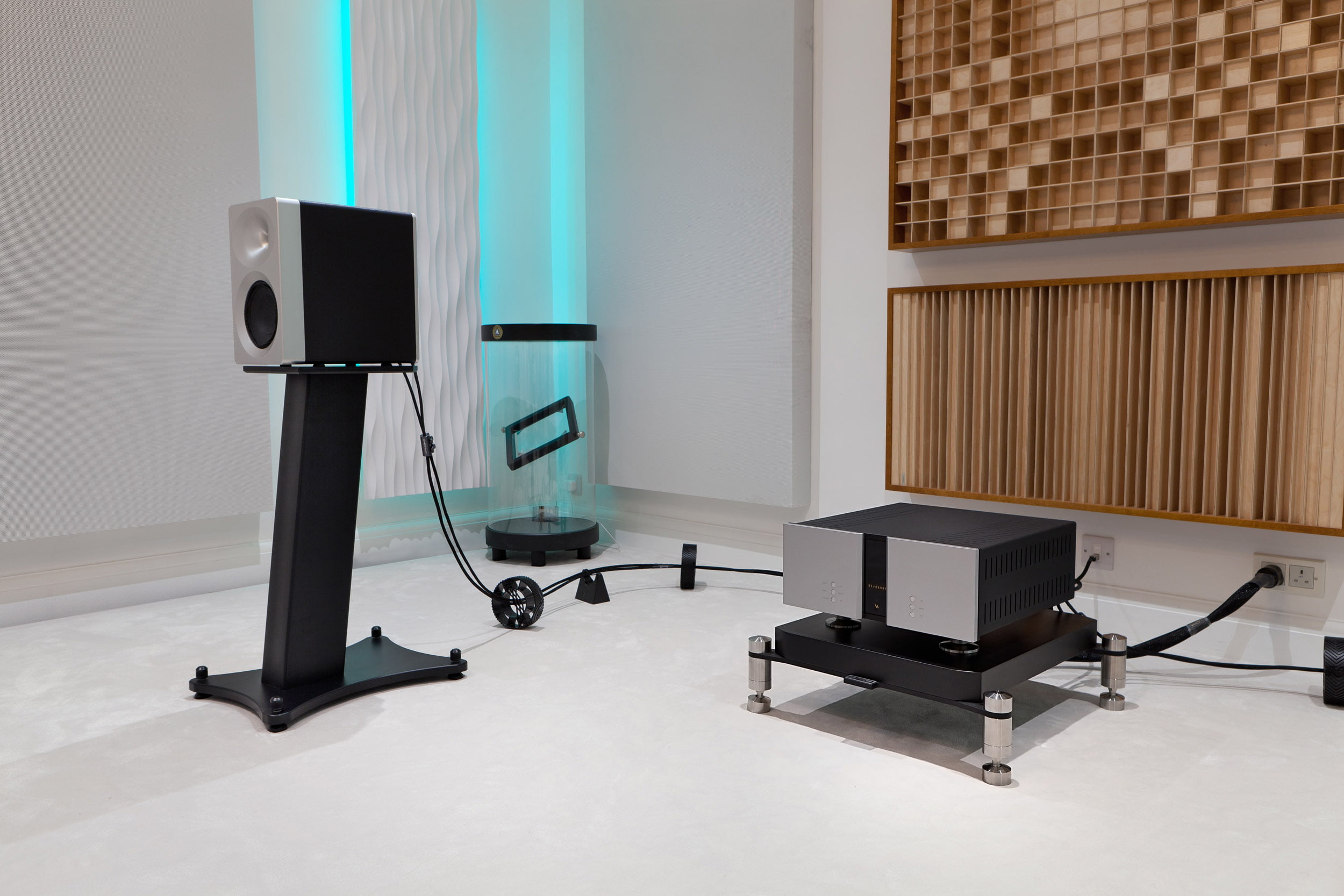
THRAX SIRENS
These new bookshelfs from Thrax Audio have made a big impact here since landing late last year. There is a Stereophile review imminent penned by Martin Colloms, and I think I am right in saying that it won’t be lukewarm ! Forget for a moment about their size and traditionally limiting form factor, these speakers are so transparent and high performing, and provide such a generously large, weighty and expansive sound that they should be auditioned by anyone coming here shopping for speakers up to twice the price. The Sirens aren’t a starter speaker for those who have limited funds but rather, a fully realised high end solution for all manner of budgets.
What strikes you first about the Sirens is just how clean and open they sound. Like their bigger brothers the Lyra, they just sound so effortlessly see through. Not a gram of smear, noise, bloat, overhang or artifice. They feel like a cut glass panorama back to the system. The Vimberg Amea for example at £5000 more sound a grade lazier, bloomier and indirect by comparison.

The Sirens are also a natural extrovert. Not the flagrantly ostentatious and egocentric kind like we see in so many mainstream speakers designed with great big helpings of added excitement, but the kind of charming extrovert who meaningfully adds to the life of the party rather than remains invisible or becomes an embarrassment. Perfectly neutral but just enough inbuilt energy to always hook the listener in. In a system of this type that isn’t the last word in bandwidth and dynamic range, and with the Vitus’s slight reserved character, this is exactly the kind of recipe which will help wield magic.
The Sirens have obviously been designed in line with the Thrax philosophy with Thrax partnering equipment so all the marques strengths are there, from class leading imaging capability to high transparency, linearity, neutrality and good natural vitality. The important message here though is that although scoring 10 out of 10 in all these metrics is not what a piece of Vitus sets out to do in the way it goes about the job of musical satisfaction, none of these properties conflict with the Vitus and in the case of the Sirens’s bold and confident way of delivering music, this actually dovetails with the RI’s persona perfectly.
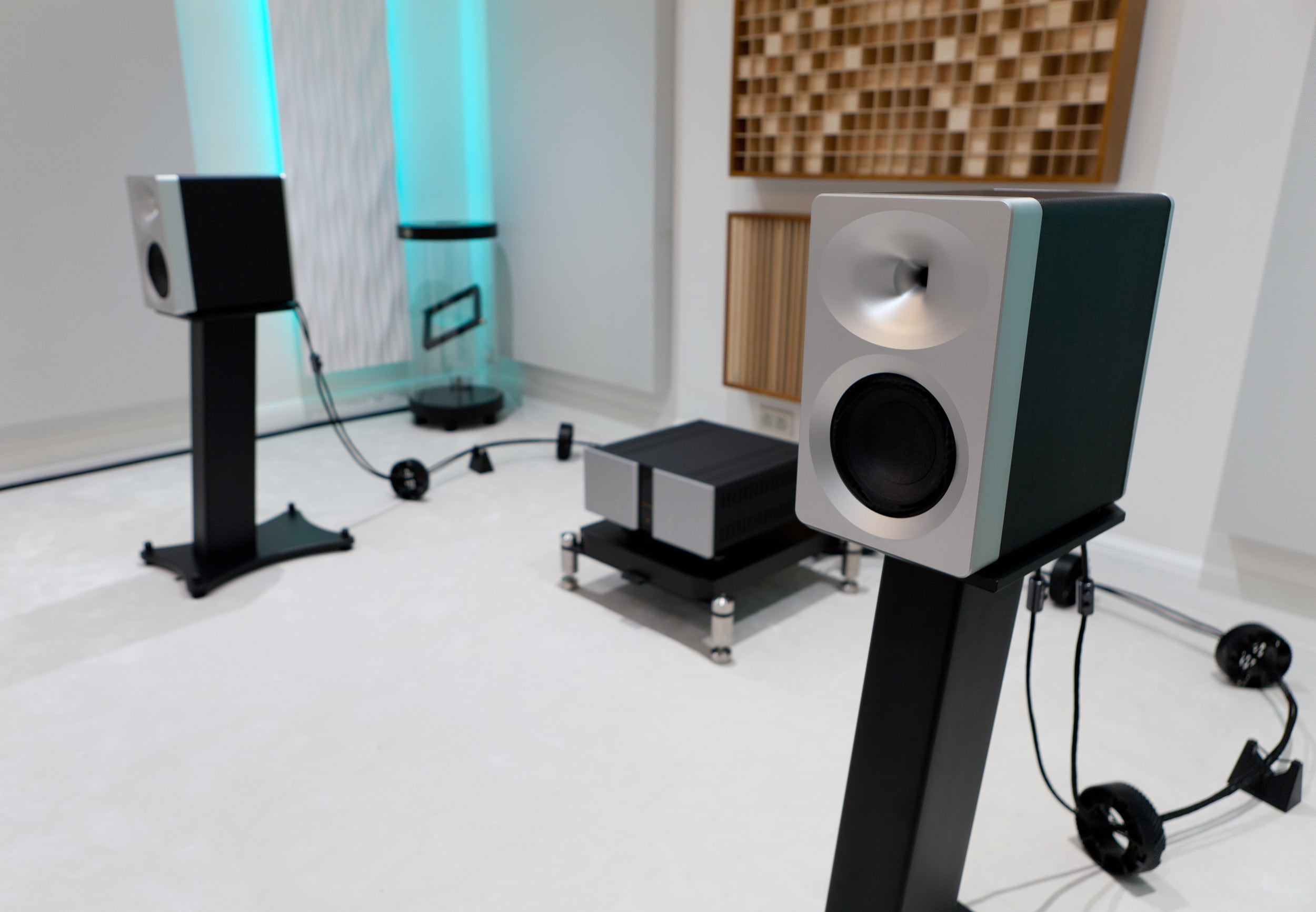
HEMINGWAY CABLES
Is there a word for hyperbole that is actually true ? Well, I am not certain what that word is but if I may be so bold, it’s now time for some of that !
Almost every customer who has home demonstrated Hemingway since its arrival here 6 months ago has been something from surprised to astounded. This is especially true of Vitus owners. This is a unique product that requires some extra understanding over regular cables and it’s why I wrote such a detailed introductory article on the brand. That blog is littered with screenshots of customers texts and emails and there’s been many more since. When we loan an item out we normally tell the customer to install, allow the system to settle and get back to us in a week or so but with Hemingway, I invariably receive a very excited knee-jerk whatsapp, text or email the same evening … “I had to message you because I simply can’t believe what these cables have done to my system”, or words to that effect.
Hemingway cables are first of all truly high end in nature. Transparent, perfectly linear across the spectrum, tonally neutral and suitably neutral in energy as well so neither laid back or forward. They do not shape or favour certain parts the music to bring about a “sound” as so many cables do. Rather, like Tara Labs cables, they genuinely just open up the signal path and lower the noise floor in an invisible and balanced manner so that you hear deeper and deeper into the system.
But Hemingway does two extra things. Firstly because of the unique way in which they lower the noise floor, the architecture of the sound is altered. Secondly, because of the way they are able to manipulate the magnetic fields in the wire, they possess a noise reducing effect that extends into the rest of the system and the very boxes themselves. Bold claims I know and difficult to understand or even believe from a technical point of view but as colleagues and now customers have discovered first hand, remove a piece of Hemingway, fit a non Hemingway cable and the system will sound pretty good at first but after 1, 2 or 3 tracks or so, as you sit there and listen, the system degrades and seems to get worse and worse. The Hemingway when they were fitted generated a noise reducing action across the entire system and it stays there for a short time afterwards, slowly escaping away once removed. This might be difficult to believe partly because there isn’t a cable like it but hey, a Lotus home demo is free and there is no obligation so you can easily find this all out for yourself.
How and why does Hemingway alter the architecture of the sound ? Well this is covered extensively in my blog but in summary, Hemingway brings about an order, a coherency and sense of disciplined organisation and timing to proceedings. The music seems ever so slightly backlit and embossed so that every note is beautifully considered and pronounced within the song. Imaging, space and air information is greatly increased and notes are cleaned and ripened to a new levels of harmonic and tonal realism. All of these things take place because not because the wire have been designed to impress or have a particular presentation but simply because they are outcomes from the unique patented way in which Hemingway controls and eradicates noise.
Why is this so special in the context of a Vitus system ? Well it’s very simple and easy to appreciate. Some of the above upgrades like space and 3d imaging, and the lustre and beauty of instruments, are things that the Vitus already does very well and these aspects of the sound just get better again. But many of the Hemingway upgrades are sonic areas that are not strictly Vitus strengths and they are properties that the Vitus appreciates more of. Articulation, speed, dynamics, life, energy, performer and note pronunciation to name but a few. Modern Vitus in a well setup system isn’t slow sounding, it doesn’t lack dynamics and it does sound alive but if you go back in time its core heritage lies in the classic products which started the brand and some of these were most definitely on the laid back, smoother and more restful side of things. The bottom line is Hemingway with Vitus just makes it sound more alive and vivid, more fun and engaging and more dynamic. The RI and SIA’s in my demo room paired with Hemingway are now more formidable and competitive and for most customers, are more likely to make a sale against other alternatives than if demonstrated without Hemingway. In a nutshell.
Despite all this specialness and all the wild claims, you will note that this system uses Hemingway’s budget range and compared to popular mainstream cables, many of which they are compared against by customers e.g. Superlumina, TQ, Chord Sarum, Audioquest, the Hemingway Indigo II aren’t even expensive and quite a bit cheaper. You get a generous 3m for the base price as well. The Hemingway magic then begins at the entry level and in this system, this is all you need with the RI to make for a truly great result.

MAINS AND NETWORK AND SUPPORT
I wanted to keep this system simple and as low cost as possible. I also wanted to show that in part because of the Vitus’s tolerance, and the high entry point of the basic Hemingways, one needn’t spend fortunes on accompanying ancillaries.
For the mains lead a Tara One AC. It’s only a little bit more expensive than a Shunyata Delta NR but pound for pound on a par with the more expensive Shunyata Alpha. That being said, the Alpha would also be a superb choice in this system adding just a smidge of warmth and smoothness.
Using the inbuilt Vitus streamer and playing from Qobuz, improvements to the home network become extremely important but I wanted to show that the system has enough refinement not to demand too much in this area so fitted is just the lower cost Signature class Hemingway ethernet lead. This alone does much to improve things and simply connects from the Vitus DAC to the RJ45 Lan wall socket.
Finally the Vitus sits on Stillpoint Ultra 2 with Ultra bases. For ten years now we have sold Vitus in combination with Stillpoints. The two together are one of the finest marriages in the industry. Stillpoints drain vibrational noise in the chassis and the PCB boards themselves. They also serve to slightly develop certain areas of the sound such as space, air, dimensionality and transient attack. Crucially they allow the Vitus to perform correct tonally as well. Remove the Ultra 2 in this system and place the Vitus direct to the amplifier platform and the treble suddenly sounds jangly, thin and metallic, not to mention the loss in coherency, timing, delicacy and overall polish. These are essential in this build.
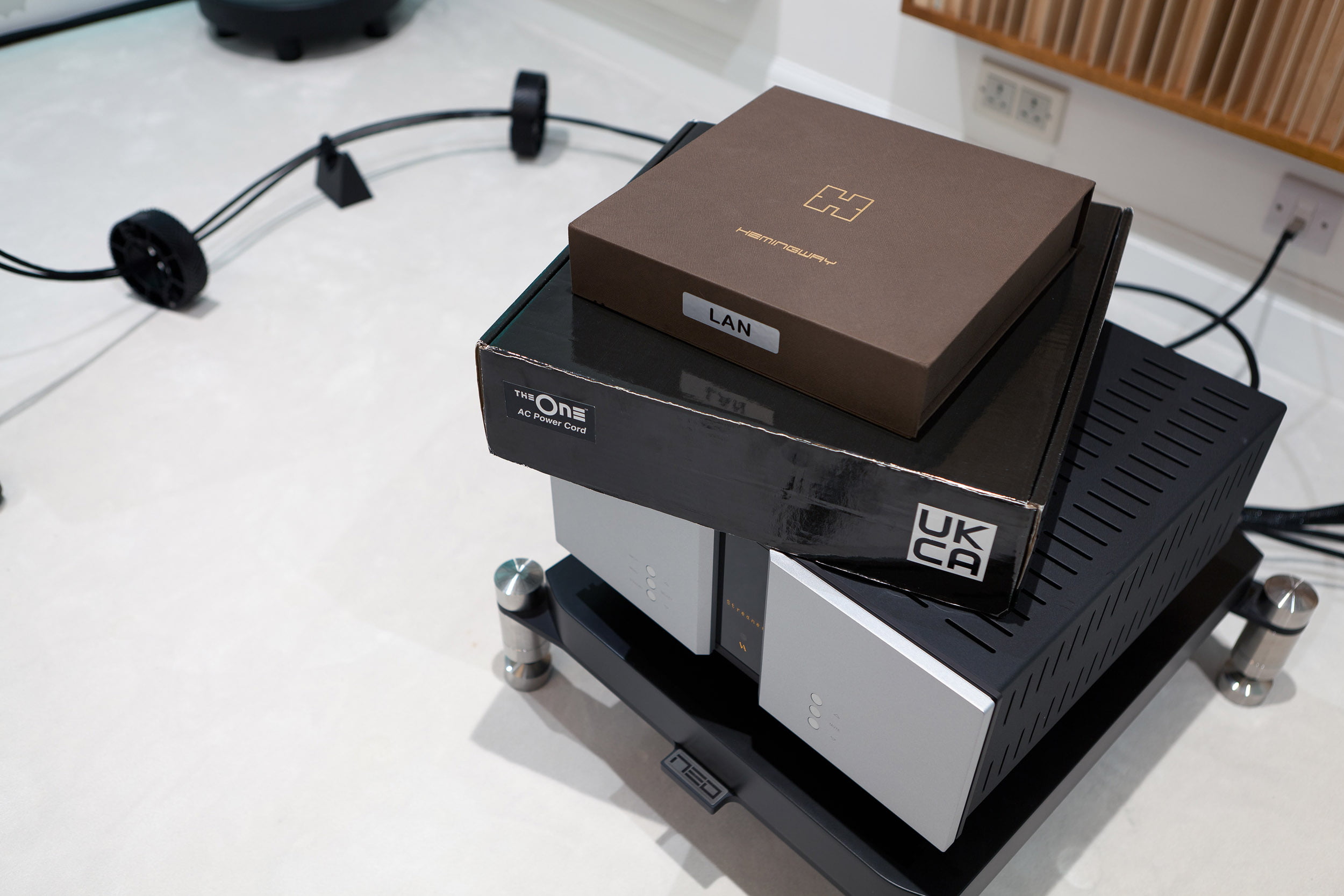
SUMMING UP
This is a cracking little system. A tonic, a sheer delight. Something to adore for its humble simplicity as well as it’s performance.
First and foremost it titillates and makes me smile because it is one of the cheapest complete combinations that I can sell you yet it performs that hugely gratifying trick of convincing you that there really is no need to spend any more than this.
Sonically it will probably give a few people a surprise because although it is one simple box mated to a set of small bookshelf speakers playing music from the internet, it honestly sounds properly high end and resolving with a huge amount of holographic space and separation within the music. It has refinement, beautiful tonality, lots of inherent 3d and depth, and gives off a big bold unconstrained sound that projects fervently into the room and completely leaves the speakers.
The Sirens are highly infectious and playful, always flirting with you and inviting you in. The Vitus with its famed polish and sweetness in the upper registers sounds so delicate and tactile on more intimate and introspective music. Fire up something more dynamic and congested though – electronica, Rap and R&B, a symphony or film score – and there is so much punch, life and drama. In an ironic sense, after almost 10 years of writing the original Naim to Vitus guide, it is probably this system which is closest to a Naim system with it’s exuberance, its drive and propulsion, although of course still offering all of the high end credentials of transparency, realism and neutrality which we all seek. It has PRAT, drive and general emotional zing in spades; a thing of joy.
Whilst the Sirens obviously have a little bit of response shaping in the lower frequencies to counterbalance their small size, the weight they deliver for their footprint is remarkable. The tweeter is like an electrostatic so anything in the midrange is beautifully rendered and voices in particular are truly standout and real sounding. The Vitus DAC has so far gone unmentioned but is also clearly a key element in the success of this setup. It has a very generous degree of detail and expression for it’s modest price and it always flows so well, an adept master of tunes, melodies and of songs full stop.
This is not a dark system and holds very little back. It has fantastic energy and verve but then it never sounds harsh or taxing. I love it for its simplicity, its fun factor and eager ‘puppy dog’ willingness to please.
This setup is also a testament to just how far things have come in a short space of time. Six years ago when I wrote my 2017 suggested systems, the equivalent then would have been entry number 2, Vitus RI-100 with Avalon Idea Mk1 and TelluriumQ ultra black cables. If you assembled that setup today it wouldn’t even hint at the sheer openness and dynamics of this 2024 system. We often state here that the chef is as important as the ingredients when creating a great high end system and what we have here crystalises this maxim in no uncertain terms. This is one of the cheapest systems we can build for you but be on no doubt that it comes adorned with three Michelin stars.
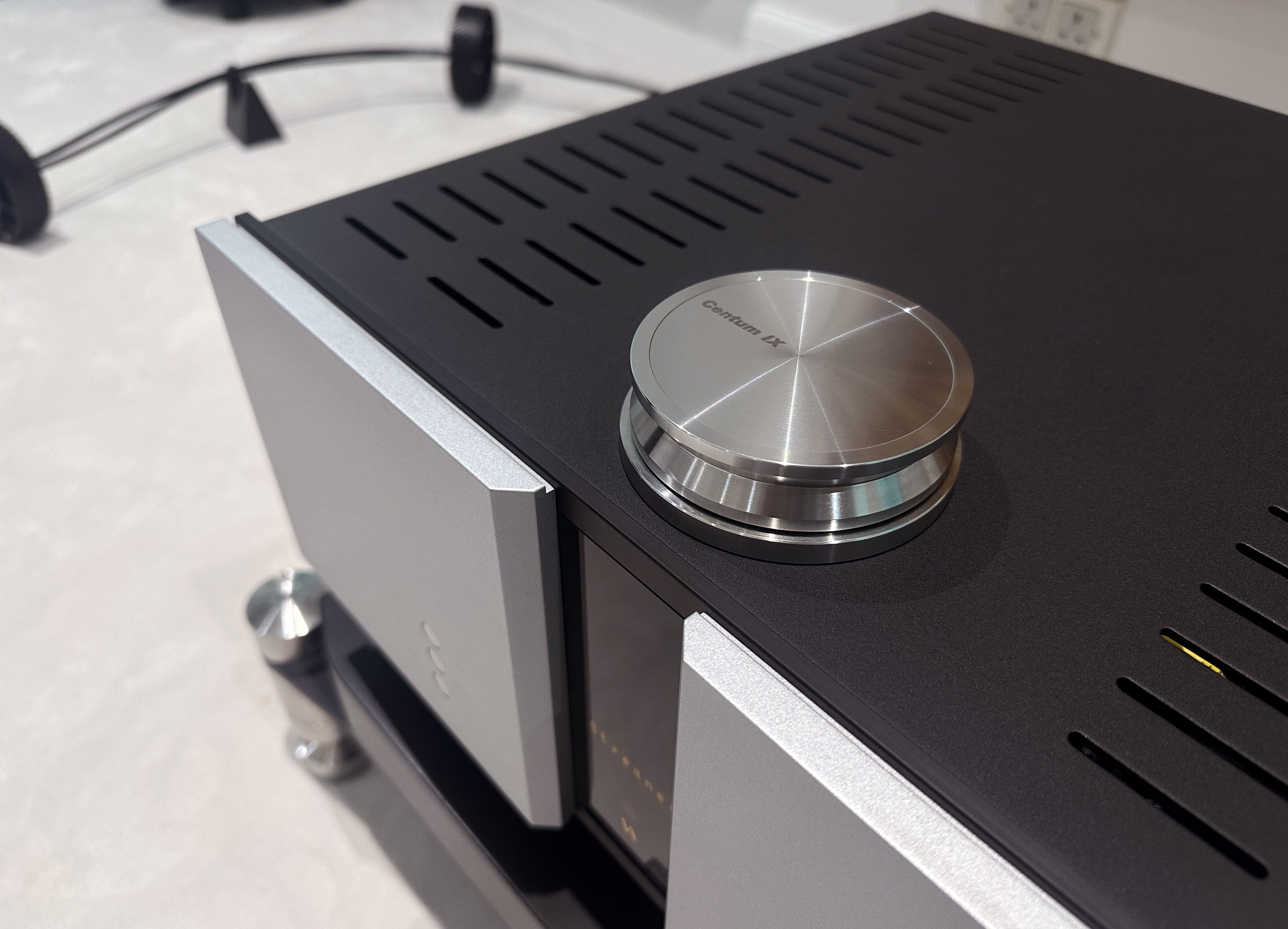
POTENTIAL UPGRADES
This system is very easy to upgrade. I stress that it doesn’t need upgrading and many people would be more than happy to stop here but if you are the sort of person who likes developing what you have over time, then obviously as a lower cost bundle a whole world of improvements await if you are that way inclined.
First up and this is hot off the press, as pictured above, is Hifistay’s Centum IX anti-resonator. At only £720 I actually wished I had included it in the full build. What it does for this sort of money represents fantastic value. The Centum sits on top of the Vitus casework and serves to lower vibrational resonance and noise and it obviously does this to both the amplifier and DAC. What you get is a cleaner more purer sound that is better organised so fits together neater and more naturally, better decay and more delicacy and a touch more transparency in the bass. For £720 you simply won’t want to remove it and this system has transparency aplenty to benefit from its effect. Along with the Stillpoints and the Tara mains lead it is gratifying to know that you are extracting as much potential as possible from your Danish investment.
After the Centum IX I would begin with the speaker cables simply moving up the Hemingway range. The Z-core Alpha at £8800 would bring about many good things and are most definitely not overkill. After that you would then upgrade the network, the better Hemingway ethernet lead then a bespoke switch like that Melco S100 or S10. The footers under the amp could be improved to Stillpoints Ultra 6 and the mains cable a Tara labs Muse or Shunyata Sigma NR. You could look at isolating the speaker stands as well and I would advise Hifistay Absolute Point as the probably most suitable underneath the Sirens.
After that, you then get to the point of adding a separate DAC. The Vitus RD-101 or SD-025 would be the natural choice, both retaining the same sound but representing large sonic jumps in almost every single area. A separate streamer could also be easily installed if you tend to play files rather than stream music from internet services.
Vitus RI-101 Mk2 + DAC, £21,500
Thrax Sirens with stands, £12,500
Hemingway Indigo II SC + Signature Lan, £4,900
Stillpoints Ultra 2 + Ultra bases, X3 £1,680
Tara Labs ONE AC, £1,995
System Price, £42,575
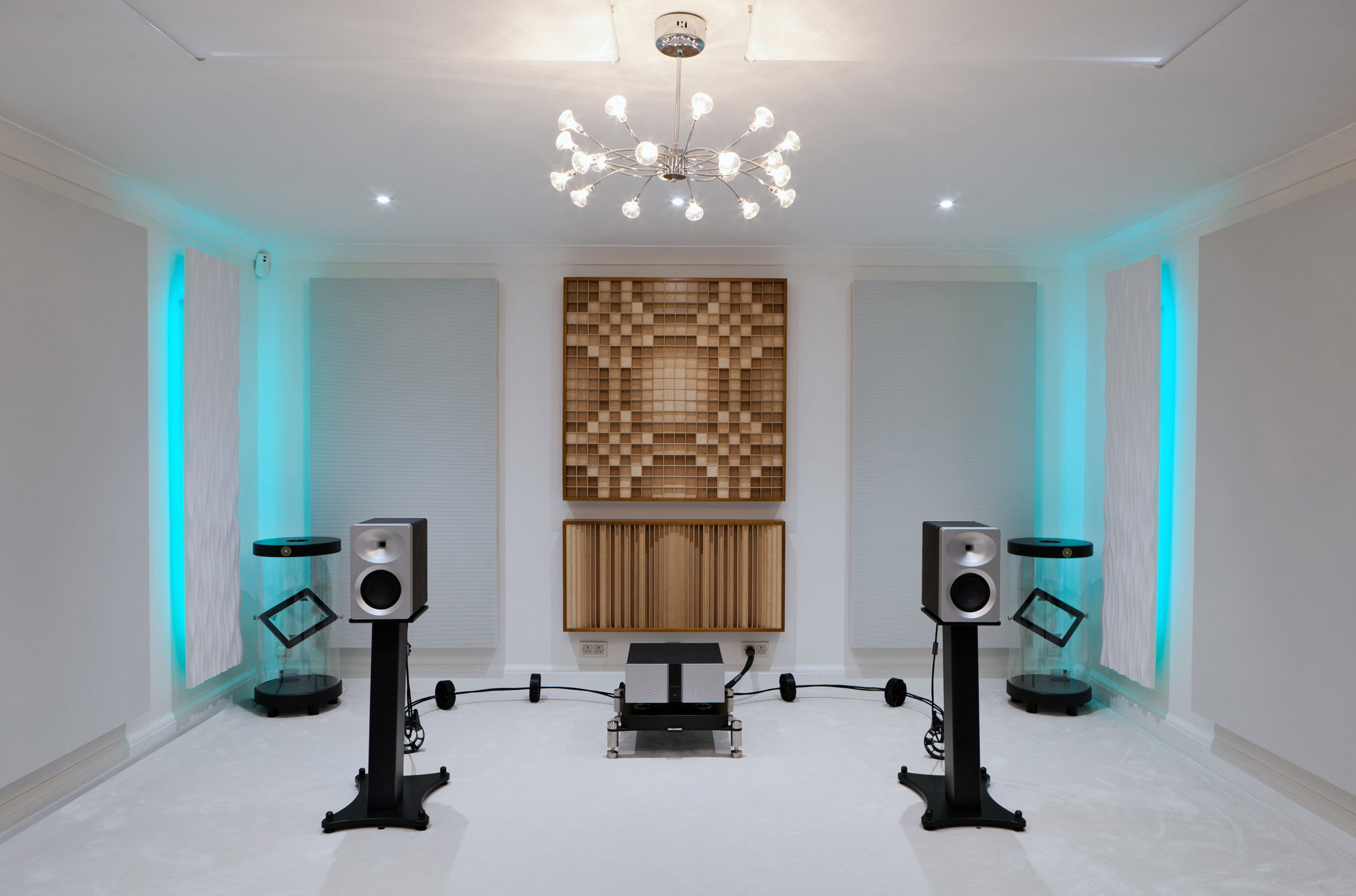
The post LOTUS SUGGESTED SYSTEMS #3 first appeared on lotushifi.